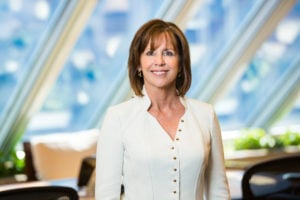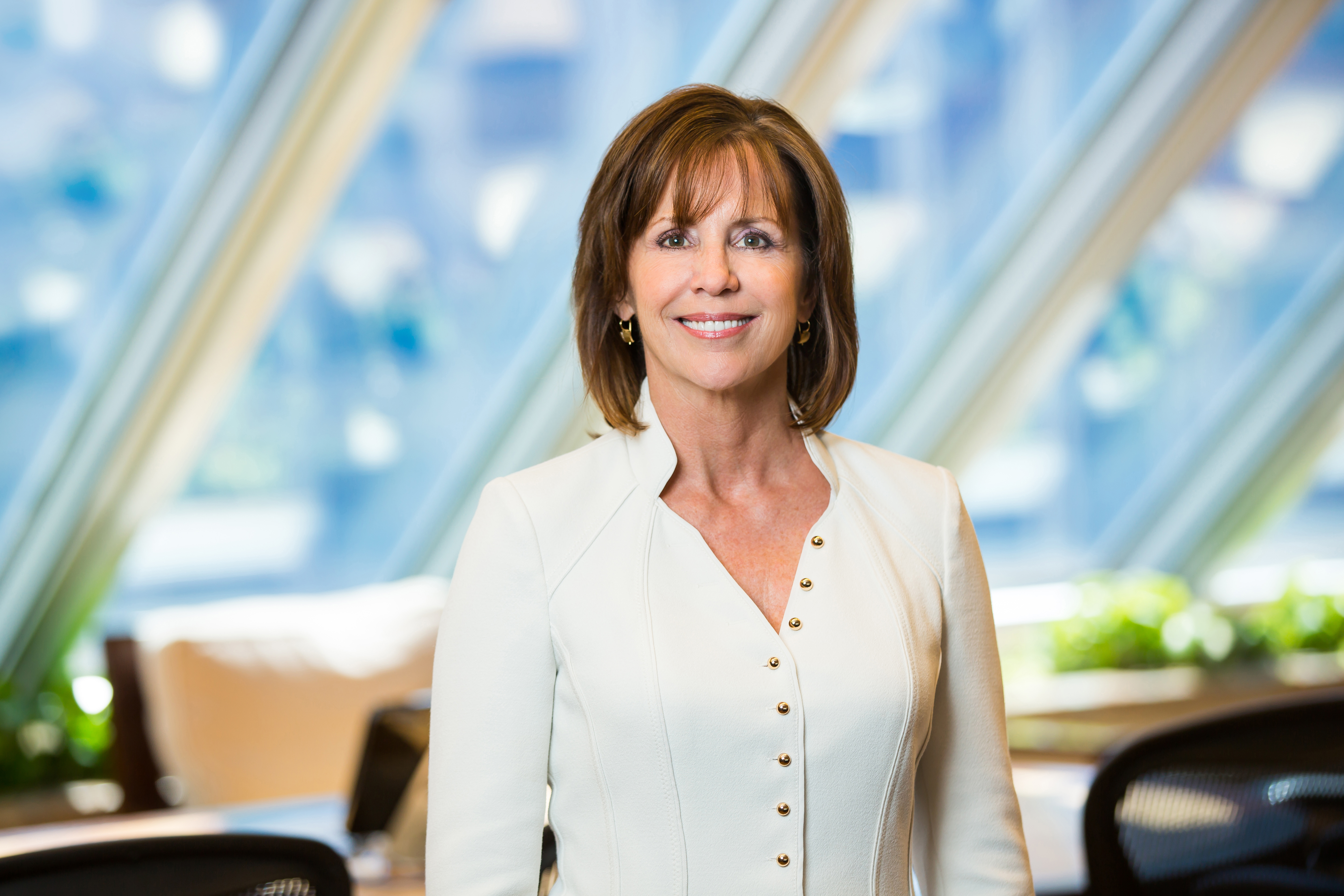Jean Case is a philanthropist and investor who is also the CEO of the Case Foundation and chairman of the National Geographic Society. Prior to her work in the non-profit sector, Case worked in technology, focusing specifically on the internet at companies such as AOL. Case also serves on several boards focusing on social impact, such as the Stanford Center on Philanthropy and Civil Society (PACS).

The Stanford Daily (TSD): How has your experience in philanthropy translated over to being on the board of PACS?
Jean Case (JC): There are so many points of intersection; let me just highlight a few. I think the role of that effort at Stanford is to bring excellence to philanthropy — to look at new tools and see what is working. And, equally as importantly, what hasn’t worked. [Another is] to engage in dialogues and to bring forward civil society… and civic engagement. That is what the Case Foundation has been about since its founding. We’ll be 20 years old next year, and we’ve been deeply engaged in civic engagement, specifically. At the Global Entrepreneurship Summit (GES), I have talked about impact investing, and that is another area of focus for PACS. And particularly because the Stanford Social Innovation Review (SSIR) is under PACS, it’s a subject that they have brought a lot of light to as well. And it’s a new movement.
TSD: Can you explain more about impact investing?
JC: When we’re talking about impact investing, we are looking for not just a financial return, but also a social return. [Impact investing] can really run a spectrum from concessionary returns, where maybe it’s not going to be market rate, to market rate and beyond. It is really a full spectrum of categories of investments. What really differentiates it is that, at the same time, it has to have intention, transparency and measurement around the impact the company or fund is trying to have.
TSD: Do you consider impact investing regarding non-profits as well, or just for-profit companies?
JC: Well, some people extend the definition of impact investing to beyond that. I think that we are following the closest thing to an industry association, the Global Impact Investing Network, more commonly called GIIN. We go by their definition, and that is the kind of area focus we bring into it, which is specifically focused on the for-profit sector.
TSD: What changes have you seen in the past 20 years regarding the field of philanthropy?
JC: I would talk about changes more broadly. I have talked about how the Case Foundation has been really passionate about civic engagement. I would probably broaden that to say empowering people and bringing people to action. So as a result, our focus area is really on movements. One of the coolest things that has happened, at least since I left the technology sector and came to the foundation world, is this new generation of Millennials.
They are a young generation that is idealistic, like all of the generations through time, but the difference is many of them are taking their idealism and are turning [it] into action. And so, we’ve been super jazzed to see the rapid acceleration and movements in causes we are passionate about, largely due to the passion of young people.
TSD: How has the proliferation of technology, like social media, impacted this?
JC: It has been a huge deal, but we are only at the tip of the iceberg. I’ll give you an example. I [started] my own career in, what was then called online services — today we would call it the internet. I was in a couple of startups and ended up at AOL and spent about a decade there. Looking back on that work, we were a missions-oriented organization. Yes, it was a for-profit organization and ultimately became a hot and successful company, but if you’d walk the halls, you would have seen people passionately focused on the mission. And the mission was to democratize access, information and communication.
As social media came along, we were really excited to see what things we could test out to help the work. And we got deeply engaged in crowdsourcing and crowdfunding. We invested in three different crowdfunding platforms that to date have raised over $3 billion in micro-donations.
That seems impressive, but that is the big tip of the iceberg. As we keep on going forward, we will see the ability for people to get more deeply engaged in the causes they care about. Take action, donate, volunteer — and I see a lot of that is happening today, but I think we’re just beginning.
TSD: Aside from what you’ve already mentioned, how has your background in technology impacted your work in the non-profit sector?
JC: What really drew me to technology was empowerment — leveling the playing field and making everyone’s voice count. And that is the same ethos we have brought into the Case Foundation through everything we have done.
In the Case Foundation, there are pillar areas [we focus on]. We are [not only] talking about impact investing, but also inclusive entrepreneurship.
We’re here in the heart of Silicon Valley, and the whole world is in awe of what we have done as a nation, but the fact in the matter is that we have done it with one arm behind our back. Only about 50 percent of the population has had access in any way to the American dream of “I’ll start a company; I’ll start a business.” Women and people of color have been left on the sidelines. We think that this inclusive entrepreneurship is really important, but we also think that it’s just awesome. If we could do this much already with only 50 percent of the people on the field, imagine what we might achieve if everybody gets an equal shot.
TSD: How has the Case Foundation helped bring about more inclusivity?
JC: We’ve done a couple of things. We’ve watched very carefully, visited and funded quite a few incubators that are promoting women and people of color. We have tried to make more obvious some of the onramps of funding and mentorship. The state of Ohio, for instance, just made a new fund called JumpStart that is specifically intended to draw capital to inclusive entrepreneurs. And what we are seeing there is a new flood of capital going to that space.
The numbers [on inclusivity] are a little all over the map, but they don’t vary much. Even the most optimistic numbers are depressing. When it comes to women, VC has only provided [about] 3-10 percent of capital to women. Whether it’s 3, 5, 7, 12 percent, it’s nowhere near where it’s supposed to be. And if you’re a person of color, particularly a women of color, we are in the fraction of a percent. There is a huge opportunity there. Our focus here has been to shine a light on this issue.
TSD: What other barriers do you see for women and people of color?
JC: Unintentional bias. And I really want to put the emphasis on unintentional. I think we’re all guilty of it. It’s not just strictly a male thing. What I’m talking about here is the natural human tendency to go to our comfort zone and go to our own networks of who we know. Typically, our own comfort zone is the path we have been on. If you’re an elite, if you’re a male, in either New York or Silicon Valley, that’s probably where most of your network is. As a result, that’s probably where you know most of what’s happening. If your network doesn’t reach out to different geographic locations and different populations to different economic sectors, you’re probably not going to hear about them. If they don’t know about you and you don’t know about them, they probably aren’t going to reach out to you.
I think what we have to put onto the table is, for us to change, we have to be very intentional. One of the great announcements coming out of the GES is that tech companies are going to be recruiting more females. The only way we are going to change is that people need to be aware — that it’s not that people are bad guys; they haven’t done anything wrong — let’s be super intentional and have some goals about who we are going to bring into the tent that have been [historically] left outside of it. And by the way, is it a fairness issue? It truly is. But it is truly an awesome opportunity for us to see innovation from places we’ve never seen it before, and who knows where it might take us?
I love Silicon Valley and tech as much as anyone, but much of the [technology] that comes out are making things more convenient for people that already have a lot of conveniences. And I think one of the things we’re excited by with people from other communities coming in is that the innovation has really been addressed at a segment of the population that has been left behind. It’s a super cool and exciting time. It has the potential to change the world in ways we haven’t seen before.
TSD: If you’re to give advice to a woman or person of color who is trying to be an entrepreneur, what would that be?
JC: Be fearless.
This interview has been edited and condensed.
Contact Christina Pan at capan ‘at’ stanford.edu.
